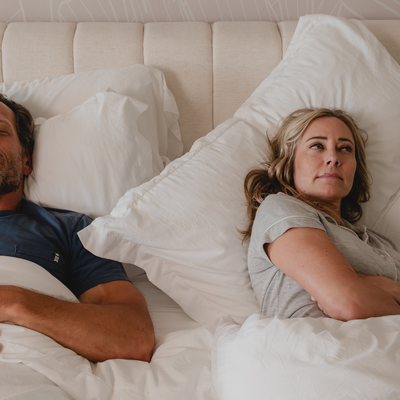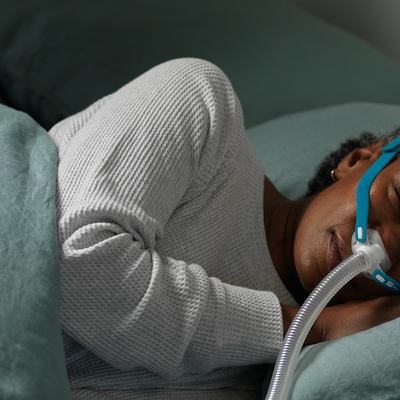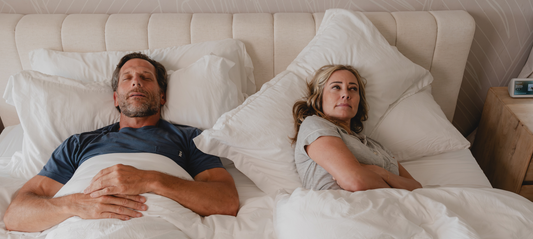Written by Nancy Kirk
June 17th, 2024
The Summer Solstice is a perfect time to reflect on the year's first half and look forward to the second. It's an opportunity to reassess your yearly goals or celebrate what you’ve already accomplished. There are also likely household chores that should be taken care of throughout the year.
During the longest day of the year (or on another day nearby), we suggest you take a moment to replace and maintain some of your everyday items to ensure the healthiest, safest home possible. By doing so, you can significantly improve your well-being and comfort for the rest of the year. From changing your HVAC system filters to swapping out your toothbrush, these small actions can make a big difference in your quality of health. Here’s a list of essential replacements to consider this season.
Q: How often do you replace your HVAC system air filters?
A: Replace your HVAC air filters every 3 months.
Your heating and cooling systems work hard year-round to keep your home comfortable. Changing the air filters regularly helps maintain indoor air quality and ensures your system runs efficiently. Clean filters trap dust, pollen, and other airborne particles, providing a healthier living environment and help improve your breathing. Aim to replace your air filters every three months and more frequently if you have pets or allergies.
Q: How often do you rotate your mattress?
A: Rotate your mattress every 6-12 months.
A good night's sleep is vital for your well-being, and your mattress plays a significant role in your sleep quality. To extend the lifespan of your mattress and promote even wear, you should rotate or flip it every 6 to 12 months, according to the Sleep Foundation. Old innersprings should be rotated even more regularly. This simple step can prevent sagging and indentations, ensuring you get the support you need for restful sleep.
Q: How often do you replace your cabin air filter?
A: Replace your cabin air filter every 15,000 miles.
Your car's cabin air filter filters out dust, pollen, and other pollutants from the air entering your vehicle. Over time, this filter can become clogged, reducing airflow and air quality inside your car. Replace the cabin air filter every 12,000 to 15,000 miles, which is roughly once a year for the average driver, to help maintain a fresh and clean driving environment.
Q: How often should you replace your toothbrush?
A: Replace your toothbrush at least every 3 months.
Throw out your old toothbrush every 90 days or sooner, according to Dr. Michelle Kelman, lecturer at UCLA School of Dentistry, who spoke with CNBC. Oral hygiene is essential for overall health, and using a worn-out toothbrush can compromise your dental care routine. Replace your toothbrush every three to four months or sooner, especially after an illness. Over time, bristles become frayed and less effective at removing plaque and bacteria. A fresh toothbrush helps you maintain a bright smile and healthy gums.
Q: How often to replace my kitchen sponges?
A: Replace your sponges every 1-2 weeks.
Replace your sponges every 1-2 weeks. Kitchen sponges are breeding grounds for bacteria due to their constant exposure to food particles and moisture. To maintain a hygienic kitchen, it’s crucial to replace your sponges regularly. Swapping them out every 1-2 weeks can help prevent the spread of bacteria, which can cause illness. Regular replacement keeps your kitchen clean and safe.
Q: How often should smoke and carbon monoxide detector batteries be replaced?
A: Replace your detector batteries every 6 months.
Smoke and carbon monoxide detectors are crucial for home safety. We recommend replacing the batteries every six months to make sure they function properly. Testing the detectors monthly and cleaning them regularly can help maintain their effectiveness. As we’re about half way through the year, this is a good time to change the batteries.
Q: How often do you replace vacuum filters?
A: Replace your vacuum filters every six to 12 months.
Regular maintenance of your vacuum cleaner includes replacing its filters every six to 12 months. This depends on the frequency of use and the type of filter your vacuum uses. A clean filter ensures optimal suction power and efficiency, helping to keep your home free of dust and allergens. For homes with pets or high foot traffic, consider more frequent replacements.
Q: When should I replace my CPAP equipment?
A: Replace your CPAP mask every six to 12 months.
To ensure optimal performance, it is recommended that you completely replace your CPAP mask every six to 12 months. Additionally, the mask cushions deteriorate and lose their seal over time, so these should be replaced every three to six months.
Some parts may wear out faster than others, depending on your sleep habits, the number of hours you use your CPAP each night, and your equipment's unique features. Regular maintenance and timely replacements will help ensure your CPAP therapy remains effective and comfortable, contributing to better sleep and overall health. We highly recommend a regular cleaning routine if you want to maximize your CPAP mask usage. Check out our guide on how to clean CPAP equipment effectively.
When to Replace CPAP Mask Headgear
CPAP mask headgear should be replaced every six to nine months or more frequently if it shows signs of wear and tear. The headgear often uses a neoprene strap to keep the mask securely in place. Similar to an elastic waistband that loses its tension over time, the headgear strap can also lose its elasticity, leading to mask leaks and reduced effectiveness of your CPAP therapy. Remember to also replace the chinstrap with other “stretchy” system parts.
When to Replace CPAP Filters
Swapping out your CPAP filters is crucial for maintaining clean, purified air. Different CPAP machines use various filters, but our general guideline is around once a month. Always follow the manufacturer’s recommended guidelines to breathe clean, healthy air during your CPAP treatment.
When to Replace CPAP Tubing
Modern CPAP equipment comes with high-quality CPAP tubing, but it should still be replaced every 90 days to ensure safe and reliable performance. Over time, the tubing can collect contaminants, leading to unhealthy air intake. Additionally, microscopic pores can develop in the tubing, causing leaks and reducing the CPAP unit's efficiency.
When to Replace CPAP Humidifier Parts
If your CPAP unit includes a humidifier, replace the water tank every six to 12 months and clean the water chamber at least once a month. Distilled water can help minimize scale and contaminant buildup, reducing the cleaning and scrubbing needed compared to tap water.
When to Replace a CPAP Machine
Modern CPAP machines are durable and well-engineered but unfortunately they will not last forever. Most insurance companies cover replacing parts or the entire CPAP machine every three to five years. You can replace your CPAP machine more frequently if you cover some of the cost. If your machine fails and is still under warranty, you may be eligible for a new unit or repairs at a reduced or no cost. It’s a good practice to replace your entire CPAP unit every five years, but you may consider doing it sooner if you want to enjoy the latest technological advancements in CPAP equipment.
Do You Have Sleep Apnea?
Symptoms of sleep apnea include loud snoring, gasping for air during sleep, waking up with a dry mouth, morning headaches, difficulty staying asleep (insomnia), excessive daytime sleepiness, difficulty paying attention while awake, and irritability.
Many people may not realize they have sleep apnea, as its symptoms can often be ignored or attributed to other causes. In fact, up to 90% of people with sleep apnea don’t realize they have it, according to the Cleveland Clinic. This is why it’s so crucial to get tested for this common condition. Untreated sleep apnea can lead to serious complications such as hypertension, heart disease, type 2 diabetes, and even stroke, so treating it is essential to ensure the healthiest life possible.
If you think you might have sleep apnea, click here to order an at-home sleep apnea test. Lofta’s tests are easy and convenient. The test will be shipped to your doorstep, and you can take the test from the comfort of your own bed. Our certified doctors review your results and provide a diagnosis virtually, eliminating the need to visit expensive and time-consuming sleep clinics. Get tested today to prioritize your sleep health.
Treat Sleep Apnea with Lofta
At Lofta, we understand that the journey to better sleep can feel daunting at first. However, our team of sleep apnea experts can help the adjustment process feel smooth and easy. Whether you have questions about the testing process, different types of CPAP machine, or proper machine maintenance, we are here to help answer all your questions related to sleep apnea.
In addition to comprehensive support during your sleep apnea journey, we also provide top-quality CPAP machines and accessories, including masks, hoses, air filters, cleaning supplies, and more. For more health tips and updates, follow our blog and stay tuned for insights regarding sleep apnea, CPAP devices, and your overall well-being.
















